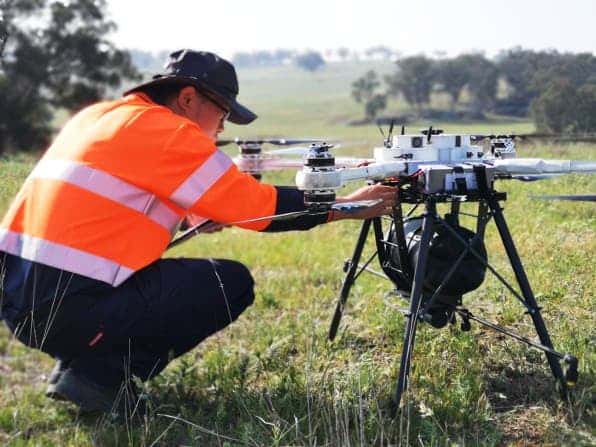About half of the world’s mangrove forests have been lost to logging and big infrastructure. That’s equivalent to 24 million tons of CO2 emissions a year. And since it is humans who caused this massive deforestation, it is our responsibility to plant it back — with a little help from tech.
In Myanmar, a nonprofit called Worldview Internation Foundation has planted more than six million trees since 2012, with plans for another four million by the of this year. The ultimate goal, however, is restoring 350,000 hectares of coastal forest, which amounts to more than a billion trees. That’s a commendable target, but also seemingly unrealistic. Just imagine planting these many trees by hand!

A startup called BioCarbon Engineering has a better way of doing things. In 2018, the company flew drones over a remote field in the south of Myanmar and dropped tiny pods containing a germinated seed and nutrients. Today, the field is covered in 20-inch-tall mangrove saplings.
Speaking to Fast Company, Irina Fedorenko, the startup’s co-founder, says that two operators working with 10 drones could plant as many as 400,000 trees in a single day. The company wants to use this approach to restore forests in India’s mountains, as well as in Sri Lanka.
Not all types of trees can be planted this way due to different seed size and growing conditions. The tests and tweaks BioCarbon Engineering has made thus far, however, suggest that drone planting is perfectly suited to mangroves.
First, the drones survey the planting site, collecting data about the area’s topography and soil as they hover above it. This data is then combined with satellite imagery in order to determine the best location to plant each seed. The startup now knows which species and environmental conditions are best suited to grow as many mangrove trees as possible.
In the future, BioCarbon Engineering would like to partner with companies that would like to offer their customers the option to carbon offset their orders.
According to a recent study, the world has enough room for more than a trillion trees. If allowed to mature, these extra forests would store 205 gigatons of carbon, roughly equal to two-thirds of all the carbon humans have added to the atmosphere since the Industrial Age. This would bring down heat-trapping greenhouse gases to levels not seen for nearly 100 years, according to the authors from the Swiss Federal Institute of Technology, Zurich (ETH Zurich).


